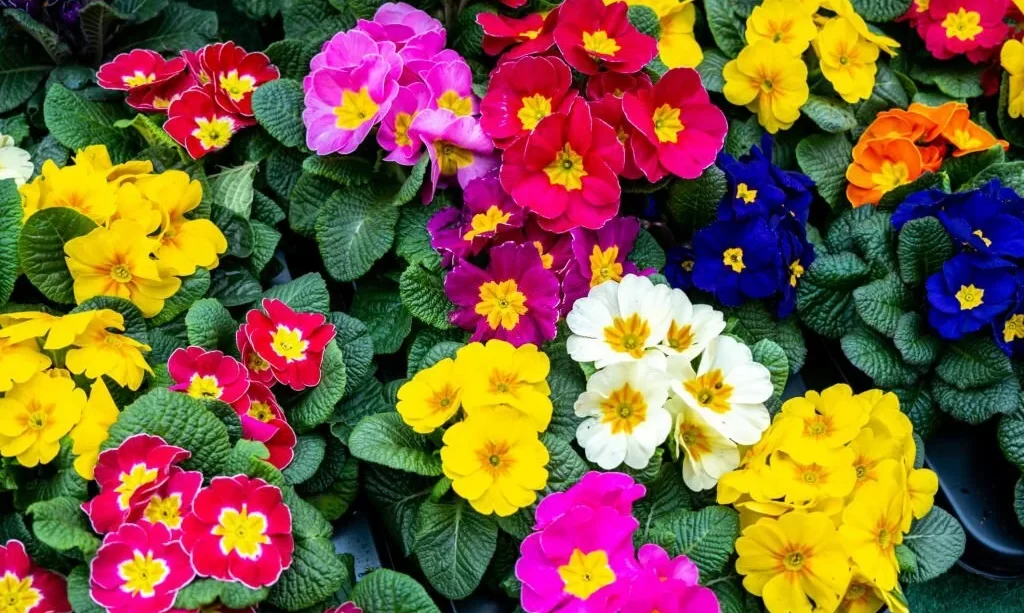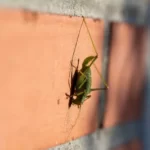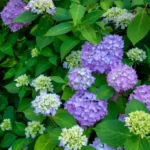Primroses are enchanting and delicate flowers that have long captivated the hearts of garden enthusiasts and flower lovers. As with any flowering plant, color plays a significant role in the allure of primroses. The shades and hues in which these blossoms appear contribute to their visual appeal and the emotions they evoke. In this article, we’ll embark on a journey to explore the fascinating world of primrose colors. We’ll delve into the natural color palette of these beautiful blooms, discuss the common colors of primroses, and appreciate the intricate details that make each variety unique.
- 50+ Mixed English Primrose Primula Flower Seeds Primrose Primula Perennial Primula Vulgaris
- PLANT SEEDS: Fall / Cold stratify; BLOOM TIME: Spring; HARDINESS ZONE: 4 – 8
- PLANT HEIGHT: 6 – 9″; PLANT SPACING: 12 – 15″; LIGHT REQUIREMENTS: Light Shade
- The English Primrose comes in a multitude of lovely colors. They are a popular houseplant or shade plant. They are fragrant and attract bees, butterflies, and birds.
The Natural Color Palette of Primroses
Primroses belong to the genus Primula and boast a naturally diverse color palette. This spectrum of colors is influenced by several factors, including genetics, environmental conditions, and species variations. The beauty of primroses lies in the array of colors they exhibit, ranging from vibrant and eye-catching to soft and pastel. These blossoms are known for their delicate and often multicolored petals, creating intricate patterns and gradients that captivate the eye.
Within the natural color palette of primroses, we encounter primary colors such as white, yellow, and red. These primary hues serve as the foundational elements from which secondary colors are derived. The richness of color in primroses allows them to stand out as charming and versatile garden plants.
Common Colors of Primroses
Primroses manifest a range of common colors that are widely observed in both wild and cultivated varieties. Among the most prevalent hues are:
- Yellow: Yellow primroses are perhaps the most iconic and commonly recognized. Their bright, sunny petals symbolize optimism and the arrival of spring. They evoke feelings of joy and happiness, making them a popular choice for gardens and floral arrangements.
- Pink: Pink primroses exhibit soft, pastel shades that range from delicate baby pink to vibrant fuchsia. This color represents grace, gratitude, and admiration, making pink primroses a symbol of appreciation and affection.
- Purple: Purple primroses come in various shades, from lavender to deep violet. The color purple is often associated with spirituality and creativity. These primroses bring a sense of mystery and enchantment to any garden.
- Red: While less common than other hues, red primroses make a bold statement. Red signifies passion, love, and desire, making red primroses a passionate declaration in floral language.
These common colors of primroses, along with their subtle variations, add depth and diversity to gardens and landscapes. The delicate beauty of these blossoms is further enhanced by the intricate patterns and contrasting colors on their petals. Each hue carries its own unique charm and symbolic meaning, making primroses a captivating subject for both horticulture and art.
Color Variations in Different Primrose Species
The world of primroses is not confined to a limited spectrum of colors; it’s remarkably diverse across various species. Different primrose species exhibit their own distinct color characteristics. This diversity is influenced by a combination of factors, including natural adaptations to specific environments and the genetic makeup of each species. For instance, the wild oxlip primrose (Primula elatior) displays pale yellow to soft orange hues, while the bird’s-eye primrose (Primula farinosa) often presents itself in delicate shades of blue and lilac.
The remarkable color variations across primrose species are a testament to the adaptability and evolutionary history of these plants. The colors they sport are not just for aesthetic appeal but have evolved to attract pollinators specific to their native habitats.
The Role of Human Cultivation and Hybridization
Human cultivation and selective breeding have played a significant role in expanding the color spectrum of primroses. Horticulturists and passionate gardeners have taken up the task of creating new color variations and patterns through hybridization. This creative process has led to the development of unique and captivating primrose varieties that offer a kaleidoscope of colors not often seen in the wild.
Through careful crossbreeding and the selection of specific traits, horticulturists have achieved exciting results. These efforts have resulted in primroses that sport vibrant and striking colors, as well as charming multi-toned petals that are simply breathtaking.
Cultural and Symbolic Significance of Primrose Colors
Primroses have not only enraptured the world with their colors but have also held cultural and symbolic significance in various societies. Different cultures have ascribed unique meanings to the colors of primroses. For instance, yellow primroses are often associated with friendship and the anticipation of new beginnings. Pink primroses, with their soft and tender shades, convey sentiments of admiration and gratitude. In contrast, purple and violet primroses, with their regal hues, can symbolize royalty and spirituality. The deep red of primroses stands for passionate love and desire, evoking strong emotions.
Primroses have been used in different traditions and ceremonies to symbolize a range of emotions and sentiments, making them not only a visual delight but also a symbol of heartfelt communication.
- Oenothera laarckiana, or Evening Primrose, is a popular wild flower seed that looks lovely in a naturalized setting or growing along a fence line. This variety has large, 2 inch blooms of yellow that are sweetly scented and attract bees and butterflies.
- The flowers open in the late afternoon and into the evening. Evening Primrose is a liberal self-sower. If reseeding is not desired, deadhead the spent blooms before they go to seed. Grows 24 – 48 inches tall as an annual plant.
- Start Evening Primrose seed directly outdoors in either the fall or early spring. Prepare a seedbed that has had the top 2 inches loosened and is weed free. Cover lightly with 1/16 inch of soil. Keep the seed moist. With a temperature range of 65 – 70F, germination is usually in 30 days
- Space the plants 18 – 24 inches apart. Grow Primrose in full sun and in well-drained soil. Primrose usually is resistant to deer.
- Sowing Rate: Plant this wildflower seed at 3 pounds per acre.
Conclusion
In conclusion, the world of primrose colors is a mesmerizing one, filled with a breathtaking array of hues and patterns. From the natural colors observed in the wild to the vibrant creations brought to life through human cultivation and hybridization, primroses continue to captivate hearts and gardens with their beauty.
The symbolic meanings attached to different primrose colors add a layer of depth to their allure. These meanings have made primroses not only a part of horticultural interest but also an integral component of human culture and expression.
As you explore the enchanting world of primroses, remember that the beauty of these blossoms is not just in their colors but in the emotions and stories they convey. Whether you’re an avid gardener or an admirer of flowers, primroses are a testament to the wonder and diversity of the natural world, expressed through the charming canvas of their petals.





